In efforts to develop its multimedia platform, Nawaat.org is opening up to creative forces in the domains of art and technology in order to offer more innovative content. We are calling on artists, multimedia technicians, developers, web architects, designers and, of course, journalists to join in our efforts.
Innawaation is our new project aiming to expand our model with tools and content that include the diverse disciplines cited above. Innawaation is a creative media projects incubator structured around a series of residencies and events. These collaborations will take place during sessions that span 3 to 6 months of work, and will be presented online or during exhibitions.
For these residencies/collaborations, Nawaat will provide participants with a production budget as well as individual support in order to develop projects and other media content, notably in close collaboration with its permanent team. Nawaat’s technical and logistical infrastructure plus its human resources will also be available to participants.
OBJECTIVES
- Strengthen the links between art, journalism, new technologies and social and citizen engagement.
- Establish a tradition that involves artists, journalists and techies in a participative and immersive approach.
- Rethink quality journalism and introduce creative tools through arts and technologies.
- Bring artists to take part in citizen and media action.
- Promote access to artistic and cultural content.
Selected Residents 6th round
In November 2022 , Nawaat launched the 6th call for projects for its media incubator programme Innawaation. Dozen of projects were submitted and two applicants were selected:

Med Arbi Soualhia
XR producer, with extensive experience in creating immersive and virtual reality experiences and art direction and curation for various festivals and events such as Gabes Cinéma Fen and JMC. He is a specialist in combining innovative technologies and creative storytelling to create memorable and unforgettable experiences for audiences. Alongside his work in the field of virtual reality, he is also a skilled chief editor and colorist, having worked on a wide range of short and feature films, TV shows, commercials and music videos. His attention to detail, technical and creative vision help him to get the best out of every project he works on. Passionate about innovation and deeply committed to excellence, he thrives in fast-paced, dynamic environments, where he can collaborate with like-minded professionals to bring like-minded professionals to bring bold ideas to life.
« Remembering » Virtual Reality experience combining image, sound and drawing.
In 2023, in the Matmata mountains, the remnants of an ancient Amazigh village, Zraoua, stand proudly on a high plateau. Although deserted, the village’s walls still bear the stories that are eternally engraved in the memories of the elders. In this virtual space, we will be immersed in Uncle Ali’s memories for about fifteen minutes. We will wander through the village’s narrow streets, explore its empty houses, and listen to his stories, which will be illustrated to bring the ruins back to life and stimulate the viewer’s imagination.
From independence to the 1970s, Amazigh villages faced political, social, and economic pressure, causing many residents to leave. They abandoned the mountains for the plains, seeking the pseudo-civilization offered by the government. As time passed, both the memories and the identity of the people began to fade. To preserve the collective memory of these villages, we embarked on an experiment. We enlisted the help of an elderly man, a former resident of Zraoua, to guide us through the narrow streets and share snippets of his life. Through immersive illustrations, viewers will descend into the village, witnessing the stories come to life and helping to archive the collective memory of the Amazigh people.
Output

Yasser Jridi
A visual artist and graphic designer from the Higher School of Sciences and Technologies of Design (ESSTED).L For the last six year, Yasser was working in several fields related to art, graphic design, marketing/communication, artistic creation, experiences with festivals, companies, and civil society NGOs. After many experiences and internships with large companies and design firms, he left to explore the world of young entrepreneurs supporting their newborn projects with guidelines, visual identities, marketing and communication strategies. after 2 years he founded his own studio called “Maze la Boite”, an active collectif in the world of art and design.
« Memories of Concrete (A low-resolution revolution) » Digital Performance
Walls have ears, streets have memories, and towns hold old energies and impressions, including memories of bodies, shapes, and feelings. These dynamics, which have interfered with the space, are not lost, evaporated, or disappeared. However, our memories and perceptions as mankind are selective and easily altered.
Memories of Concrete is a 30-minute digital performance based on Mapping techniques, projected on the facade of the central market of Tunis. The performance offers a psychic immersion in a tunnel of sounds, lines, and twisted shapes, capturing the interactions of energies in the space. Those projected memories are based on video recordings of people’s hands and feet in motion, treated afterwards to be shaped as the energies that are printed into the space by humans of the central market, when they move, act, interact with the space, with each other.
The performance is a tribute to those who never gave up, reflecting the daily struggle for resistance in the central market of Tunis. Working is a symbol of Resistance, it is filled with this charge of leading a daily fight to overcome conflicts and repression of all kinds. This struggle becomes reflected in the smallest details: waking up, providing, walking tall and proud, singing and being festive, exchanging … every movement we lead is in itself a sign of resistance, it’s a dance with the course of life.
Output
Selected Residents 5th round
On 06 July 2022, Nawaat launched the 5th call for projects of Innawaation. Tens of projects were submitted and two applicants were selected:

Houssem Hajlaoui
Web architect and maker, Houssem is a full stack engineer and Open Source advocate and developer. In love with the JavaScript and Node frameworks. He is passionate about Growth Hacking, Digital Marketing and Branding for the Internet. Houssem was a project manager at Nawaat and a Co-founder of the award-winning webzine Inkyfada and co-editor of the cutting-edge SaaS Appgrades. He spent years lending his technical expertise to the Tunisian civil society mainly in the fields of independent media and dissident information. He is the tech lead for several US and UAE-based companies. His application to Innawaation comes as an extension to his ongoing collaboration with Nawaat. He has already designed and deployed the current technical infrastructure of the Nawaat platform and currently working on the new version.
Nawaat Smart Infrastructure
The idea is to create a web infrastructure that enables Nawaat to have more flexibility maintaining and especially exploiting its content, the whole while giving Nawaat as much independence as possible.
This includes, but not limited to :
- An API (Application Programming Interface), a platform exposing the content of Nawaat to be accessed and eventually used by any external platform, site, portal or application.
- A data structure that enables Nawaat to create its own analytics platform giving more insights on how Nawaat journalism and blogging is being used and the impact Nawaat is actually having.
Nawaat Time Machine
Nawaat is the ultimate alternative media for Tunisia since 2004. Nawaat Time Machine is a project that involves creating a platform that helps journalists, researchers, organisations and content creators navigate back in time to explore the enormous Nawaat archive in more effective and time saving ways.
From opinion pieces submitted by activists, human rights militants, opponents and intellectuals to Nawaat own productions and journalism, Nawaat’s archive today is, literally, the memory of the entire country since 2004. Nawaat’s content tells the inspiring and painful story of the struggle of Tunisians since the dictatorship to today going through the democratic transition.
The platform will provide a visual effective way to get snapshots of any topic in any giving time.
This is a technological answer to the question “what was the debate about X back in T”.

Chehine Dhahak
Freelance image designer, Chehine is a lover of cinema and art history, he entered the School of Design Science and Technology, graduating in 2011 with a degree in audiovisual advertising, followed by a research master’s in cinematic praxis at the Gammarth Higher School of Audiovisual and Cinema. Since then, cinema and photography have played an eminent role in his work. Constantly challenged, his work is a quest for fleeting beauty between space-time and the instinct of the moment. With his camera, he draws a certain social satire in the midst of a changing society. Contrasting with the pace of modern life, cynical and vagabond, his images take on a zest for urban and rural life.
Several group exhibitions to his credit, including “Les rencontres photographiques de Ghar el Melh 2009”, “Le Printemps des arts 2012”, “Regard croisé 2014” and other artistic projects.
« Vagabondage » Exhibition
For days and nights now, I’ve been scanning the skyline, weaving my way through the maze and enjoying the time of an urban rout to detect the balances and flaws that shape the anonymity of human beings and the omnipresence of concrete.
A blind wall, battered buildings, silos with industrial structures restoring an oppressive volume extracted from an anodyne everyday life: all in shades of black and white, playing on the brick color that offers a reddish counterpoint to the cement gray that reinvents urban wastelands.
Like a metaphor for laborious survival, a stooped figure, head bowed, fallen but alive, crosses these deserts braided with solitude.
Bursts of color conjure up the emptiness with their exuberance, and sometimes a whole family emerges as a counterpoint to these abstract urban landscapes adorned with silent violence.
Finally, the wandering continues on both sides of the day, until the long-awaited anabasis…
This subtle interplay between being and structure reinvents a fantasized reality, a chimera that defines the relationship between people and things.
I wander on an inner quest, as random as chance, at the mercy of fleeting and boring revelations. Vagabond and nomadic, I end up settling down to give this dynamic appearance to a photogram in perpetual agitation.
Output
Selected Residents 4th round
In January 2022, Nawaat launched the 4th call for projects for the 2nd round of Innawaation. Dozen of projects were submitted and two applicants were selected:
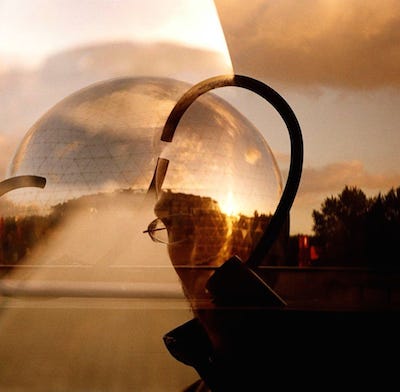
Callum Francis Hugh
Based in Tunis since the summer of 2011, Callum Francis Hugh is a self-taught photographer originally from London. Whether through his work on a TV documentary with Free Reporters or multimedia journalism collaboration with the collective blog Nawaat, Callum’s approach is one of immersion into his surrounding environment, offering a nuanced and close-up view of the world around him. Callum returns to Nawaat with a new exhibition « Hors-réseau » (Off-the-grid), a glimpse into the life of a nomadic family in the Tunisian Sahara.
« Hors-réseau » Exhibition
Far beyond the destructive influence of social media, 4G and « catch all » algorithms, who and where are the individuals living outside the echo chamber that is today’s media landscape? Is their existence « off-the-grid » by obligation, or by choice? To answer this, Callum set out with his camera into the Saharan desert, where he met a family of nomads, the Raabia. In this arid zone of southwest Tunisia, transhumance is the core of existence for the Raabia, whose cross-desert migrations to graze their herds are dictated by the changing of the seasons. While borders may be of little concern to this family, climate change has begun to take its toll on daily life, threatening their very survival.
Output

Haithem Sakouhi
Born on 16 June 1993, Haithem Sakouhi is a filmmaker, photographer, street artist and researcher in film science and technology. He has directed several short films that have received both national and international recognition, including « 1999 » and « Zulu Rema ».
« Syndrome de Tunis » Movie
Le syndrome de Tunis (Tunis syndrome) is an urban symphony which tells the story of an anonymous photographer whose fascination with his city becomes an obsession. A docu-drama that sheds light on the current condition of colonial architecture in Tunisia’s capital city.
Output
Selected Residents 3rd round
On June 17, 2021, Nawaat launched the 3rd call for projects for the 3rd round (of 4) of Innawaation. Dozen of projects were submitted and one applicant was selected:
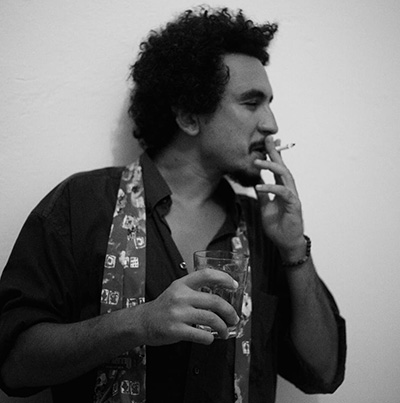
Malek Khemiri
Malek Khemiri is a filmmaker and photographer. He is also co-founder of Armada Bizerta, an underground Tunisian hip-hop group. With different international collaborations, he tries to combine various art forms in his work. Major of his class at the ESAC with a video essay on skateboarding in Tunis Malek gets his master in directing and screenwriting in 2019 to devote himself to a daily photographic practice, the realization of clips and the animation of photographic and cinematographic workshops with young people in Kef in Tunis and Sousse.
The need to broaden the tools of expression have pushed Malek to be interested in the image and to study cinema. A collaboration with SVT, the Swedish national channel, he embarked on the realization of a series of reports in Tunisia. Malek made his first documentary in Regueb, the city of the first festival of the revolution in Tunisia. He followed this up with Triton chasseur, his graduation project in collaboration with Fusam, a sound dystopia, shot in part at the Goethe Institute in Tunis as part of a cultural and experimental lab. This experience pushed Malek to experiment with the use of the silver photographic tool in a sort of return to film.
Black Babel A photos exhibition
No more than it is appropriate to go through Malek Khemiri’s photographs at a run, one should not look for a practice of reporting in Black Babel. His approach, subject to the authority of current events, nonetheless tends to go beyond them. These images taken between January and February 2021, would they be more than small pebbles left behind, snapshots of memory? From that winter, when the pandemic was in full swing, we will have kept the memory of corseted nights, sucked in until noon by the clamor of the riots whose day would prolong the echo.
What is offered to the eye is scenes that fit together too well, because everything is there: from hooded faces to drones, without forgetting of course the fireworks and the cops sprayed with paint or spat upon. But let’s be reassured: there can be no narrative in Khemiri’s work other than contraband.
What challenges us is the way in which Khemiri is at odds with a certain exercise of photojournalism. Here, the eye does not investigate nor does it seek the exceptional shot. To the omnipresence of the slogan and the word, he prefers the opacity of bodies and the grammar of gestures. It is less the presence on the square that interests Khemiri than what makes up the subalterns, a fraction of a social body eaten away by despair and shouting its anger in the face of arbitrary arrests and sentences. If the report of these anonymous people goes beyond the presence in a public space confiscated under the blind spot of the state of emergency, the photographer is solid at the post to probe the pulse of antagonisms and solidarities in presence.
It is in this that Black Babel would be of a paradoxical fecundity. Flirting with abstraction to the point of duplicity, as if it could grasp the raw fact, the documentary facture of this series is somewhat perverted, between the possible and open place to the accident and the premeditation of the frame inside which the real and its double come to be inscribed. One would say of this maverick that he rushes into the middle of events where it hits, then sets off again on the hunt as if in battle.
Output
Selected Residents 2nd round
On January 23, 2021, Nawaat launched the 2nd call for projects for the 2nd round (of 4) of Innawaation. Dozen of projects were submitted and two applicants were selected:
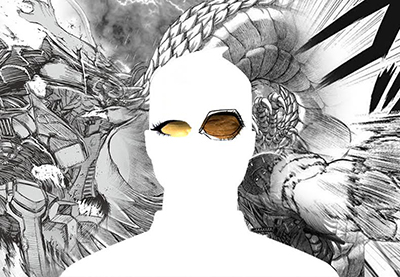
Nuts
« Nuts », Rym Amami & Ghazi Frini, are two oleaginous adventurers who spent years of their lives in vitro, inside jars belonging to Arbi the « 7ammas » [corner store owner]. As they carefully planned their escape, the two nuts made themselves very tiny in order to avoid being snatched up, and spent hours smoking Camel cigarettes and digging a tunnel with the help of a wooden spoon borrowed from a « President » ice cream.
When the hour of salvation struck, they were nearly captured by the army of newspapers ready to swallow them up inside a « 9ortas » [paper cone for holding nuts] with a handful of cashews, but somehow they managed to escape.
In the haste of their evasion, the two were separated.
Peanut snuck onto an illegal immigration boat headed for the Old Continent where he would sow his seed while Almond preferred to remain, incognito, on the street corner of the old 7ammas where she would write her memoires.
It wasn’t until the celebration-in-confinement of the 10th anniversary of the Revolution that the two were finally reunited on the same plate of Kamia [snacks served with drinks]. They decided, naturally, to conquer the world.
FANTASIA 907 B* A digital collage series recombining fragments of image and text
The world of « Fantasia 907 B » exists in an imaginary, satirical spatio-temporal context which serves as a metaphor for Tunisia’s social, political and cultural landscape over the past ten years, with direct references to American and Japanese geek culture.
Over the years, an infinite number of photos and videos have captured fleeting moments that remain engraved in our memories. The incessant flood of information everyday has scattered these memories. Some, many of whom are older than « Nuts », have not experienced these surreal moments, anecdotes and absurdities. And yet existing archives and sources of information are directed towards a very specific public.
The two authors of this project, Rym Amami & Ghazi Frini, have set out to freeze time using the technique of collage. Each text, which refers to one year of the past decade, will be accompanied by a digital and manual assembly of photos taken from video captures, newspapers, photographs, caricatures, memes, etc.
« Fantasia 907 B », Frankenstein of a memory archived at the morgue, has come to life thanks to the surgical skills of « Nuts », and set out in search of an audience that will praise him with laughter or screams.
Output
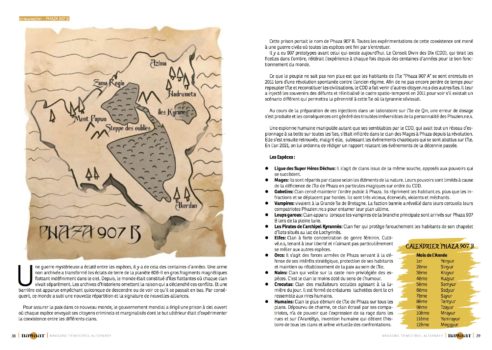
This product has originally been published in our print magazine Hors-Série #2 (October 2021). You can order a hard or a digital copyof the entire magazine here.
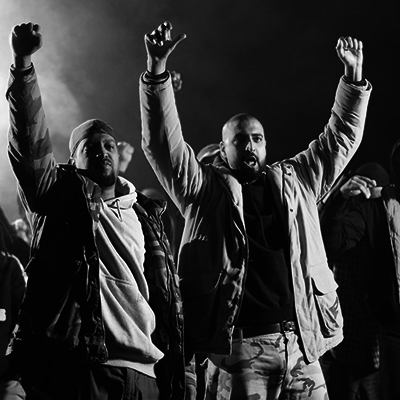
WMD
Mehdi Mistiri, known by his stage name WMD, is a writer and rapper. Professionally, he has worked for nearly ten years as a copywriter in one of Tunisia’s leading marketing agencies. He has worked on dozens of advertising campaigns and videos. Born in 1981, Mistiri drew attention in the beginning of 2000s for his ability to rap in English and his authentic style inspired by New York rap. In 2009, he came out with his first album « New Species » with the group Afrock. One of the clips from the album was included on the MTV Arabia playlist and earned him several invitations to participate in international compilations like « The Middle East Invasion Vol. 2/A Nation Unseen ». After coming out with several singles as he pursued a solo career, he collaborated with Dj Lethal Skillz on the album Karmageddon, a project that brought together some of the most popular Arab hip hop artists including The Narcysist and Shadia Mansour. In 2012, he signed his album « Pillars » in collaboration with beatmaker Ahmed Galai. The album featured prominent rappers from the American underground scene like Ruste Juxx and John Robinson. He has since continued to collaborate with different artists and has gained the respect and esteem of Tunisian hip hop purists within the country and across the region. He is currently working on a new solo album while he continues on the Bab El Beat adventure.
EMP1RE
Belhassen Kekli, artistically known as EMP1RE, is one of the Tunisian hip hop scene’s most widely followed rappers. Kekli, whose style remains loyal to an authentic urban esthetic, began his career at the age of 18 when he co-founded the group Empire in 2008. Throughout 2010, the group performed in cities the country. A fixture on the stage like his Bab El Beat peers, Kekli signed his first popular success in 2011 with his single « No Exit ». The artist’s lyrics which combine coarse language and poetic metaphors have shaped his unique identity. Since 2011, he has continued to create music and come out with the album « Inti w Mokhek » which affirmed his artistic maturity and potential as an incomparable rhymer.
Gloub Faydha WMD Feat. EMP1RE [Bab El Beat]
« Gloub Faydha », a rap song created within the Bab El Beat project, is a cry of revolt against the established political class and a call for resistance against police repression. The clip alternates between the fictional universe reflected in the song’s lyrics and Nawaat’s video coverage of protests. In form, these videos match the music’s accelerated tempo and hard core percussions. In substance, they illustrate the song’s theme and lyrics.
Nawaat has a rich stock of audiovisual archives that could be used in this video clip. Such images could serve not only as a visual support but also as a link between the country’s political reality and song’s imagined universe. These archives constitute an ideal visual support in the artist’s efforts to bring together an artistic practice that is rooted in the urban arts—which is so familiar to young protesters—and a media outlet which covers the topics that interest them and denounce the injustices they face.
Output
Selected Residents 1st round
On July 22, 2020, Nawaat launched the 1st call for projects for the 1st round (of 4) of Innawaation. Tens of projects were submitted and three applicants were selected:

Selim Harbi
Transmedia storyteller & journalist, award-winning director, TEDx Speaker and World Press Photo grantee. Based between Tunis and Berlin, Selim holds a BA in screen-based and audiovisual media. As a beauty hunter, world connector and passionate traveler, he loves to redefine things, and is particularly interested in contemporary African and diaspora issues. With a special flair for tech-trends and experimentation, he designs cutting-edge projects with new media tools. He is always looking for new challenges and to make a positive impact.
7OUMA* VR Immersion into Tunis most disadvantaged neighborhoods
This project is a deep dive into the unseen Tunis. A unique introspection into marginal spaces in Tunisia today, 10 years after the revolution. Based on meticulous journalistic research and character-driven narratives, this project will immerse us within the social-economic issues facing disadvantaged communities and neighborhoods surrounding Tunisia’s capital. Poor infrastructure, lack of urban planning, absence of green and cultural spaces, degraded public services such as schools, hospitals and transportation, marginalized unemployed youth—daily life in the city’s impoverished outskirts that is home to a hundred thousand abandoned individuals will be the target of this project. We will use VR and 360° videos as tools to access forgotten spaces and to engage with the neglected communities that live there. We will experiment with immersive journalism in order to stretch the boundaries of storytelling to enrich Tunisia’s media landscape and engage new audiences regarding important issues.
We will focus on the disastrous environment in which these communities are living, and also give voice to the citizens who are doing their best to improve their neighborhoods. Combining innovative journalism with socio-economic reporting, each story will confront our audience with the real lives of those living in these impoverished neighborhoods hidden behind the highways of Tunis. We will go to three Tunisian favelas : Hay Hlel, Djebel Jelloud and Sidi Hassine. In each neighborhood, we will meet one or two residents with compelling stories, take videos, and put it all together in a well-designed web VR platform.
7OUMA VR project wants to engage local audience in a fully different way :
- producing compelling 360°character-driven stories for web VR.
- designing the stories as stand-alone App downloadable for VR headset users.
- integrating it in the on-going Nawaat interactive Web-doc “Mapping the disadvantaged“.
- producing a fully spatialized audio-podcast out of the stories.We will organize a VR workshop to empower local journalists with new skills.
* Pronounced Hūma: neighbourhood in Tunisian dialect.
Output

-Z-
-Z- is a cyber activist-cartoonist. He became known through his blog debatunisie.com, where he has been reviewing and commenting on Tunisian news since 2007. Thanks to his anonymity, -Z- eloquently attacked the Ben Ali regime. His drawings and texts circulated on the net in spite of censorship. Tunisia’s revolution allowed the blogger to publish his first album in Tunisia and to publicize his work in the national and foreign press. Even today, -Z- preserves his anonymity and maintains his blog where he continues to attack Tunisia’s raging corruption and “Capitallahisme”—a neologism he created to stigmatize the marriage between power, money and religion.
Psycaricatures Exhibition and animated Psycaricatures
-Z- has collaborated with Nawaat since 2018 through his caricatures of political personalities which he aptly calls “psycarciatures”. The drawings serve as a psychoanalysis which reveals the hidden side of the individuals in question. Nawaat’s editorial staff propose the public figure who -Z- subsequently analyzes using this news-based process.
The fruit of this rich collaboration is an exhibition in Tunis that will be organized by -Z- and Nawaat to the end of translating this collection of portraits of political figures into a large format. Through these “psycaricatures”, we offer a glimpse into Tunisian news over the past two years. The individuals presented are always controversial personalities who have sparked politicized debates in the media. Through this exhibition, we will fulfill a dream held since the dictatorship of Ben Ali: to expose and mock, in full freedom, the dark side of those who govern us. -Z- is excited to put this work on display in collaboration with Nawaat, with whom he has maintained a strong friendship even prior to the revolution owing to the common struggle for freedom of expression.
Finally, the exhibition will not only include the restitution of old psycaricatures, but feature new drawings as well. With the help of animator-director XY, we will produce an animation of 2 or 3 portraits which will be available online and serve as web comm announcing the exhibition.
Output



